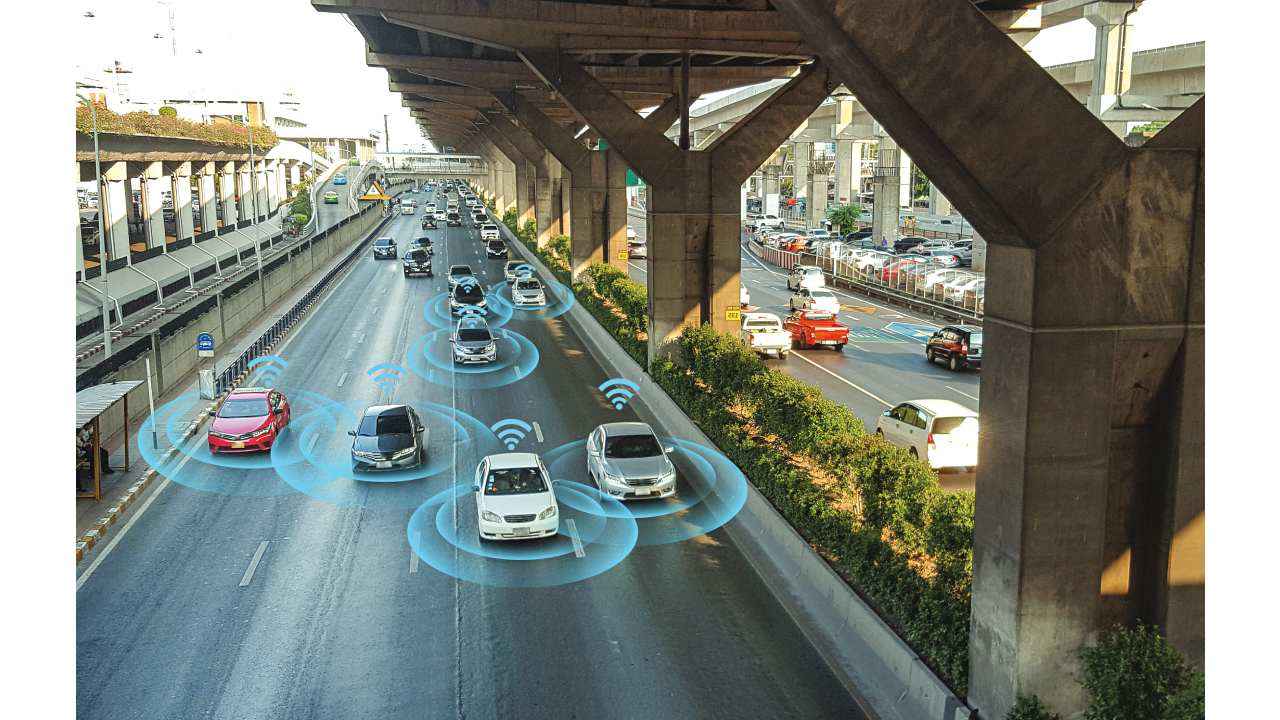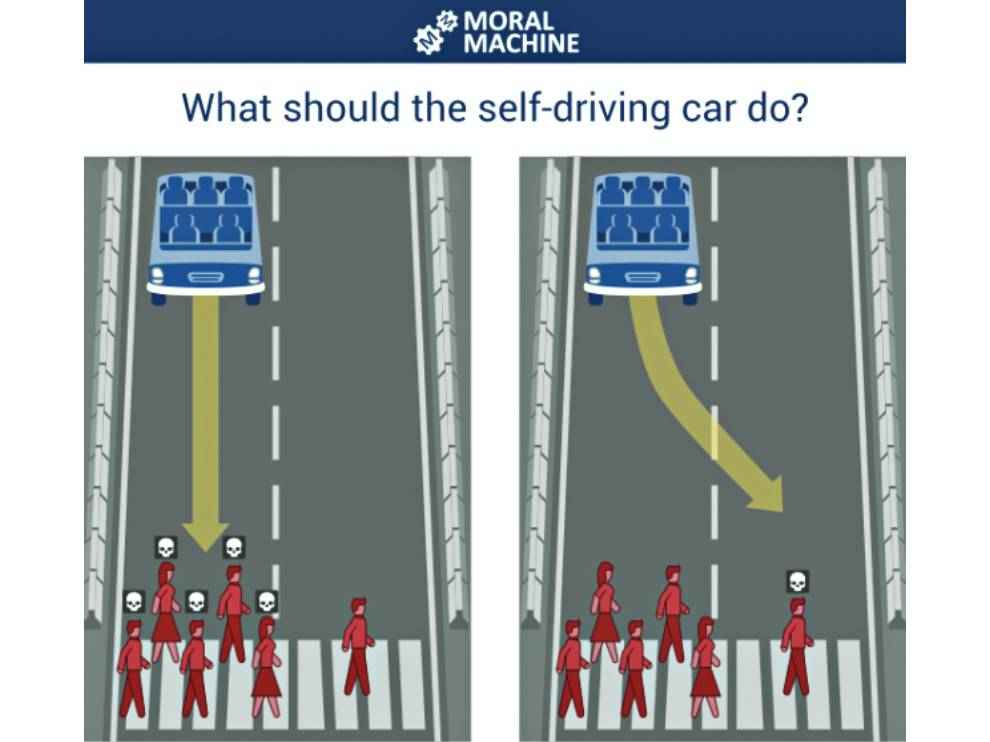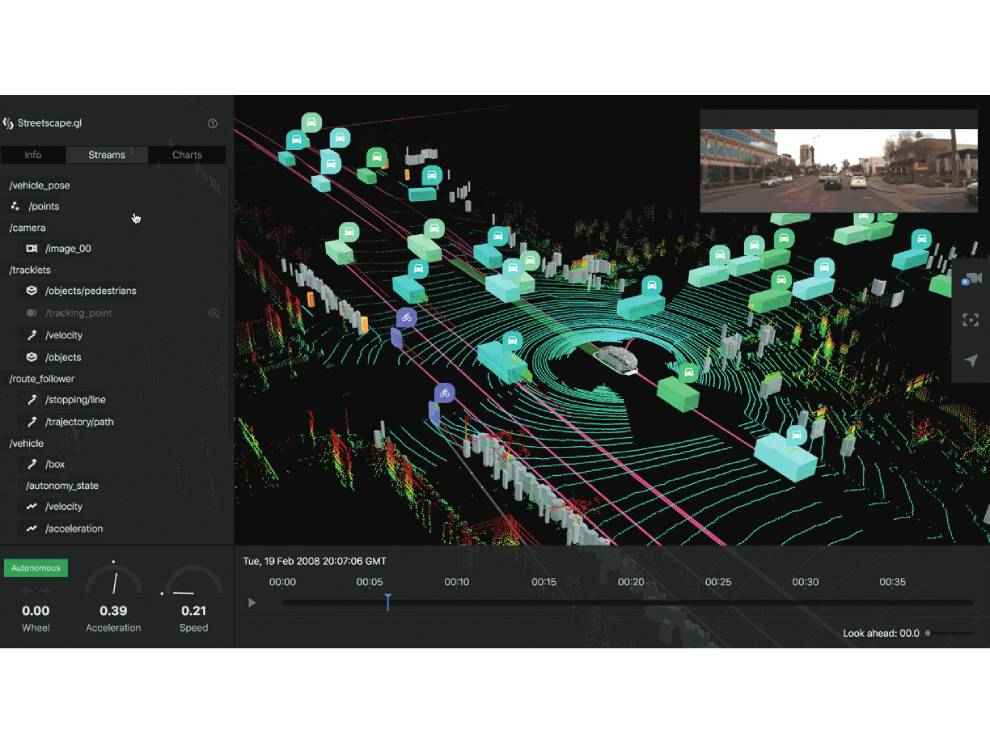The future of Autonomous cars

Ethical considerations
The ethics of self driving cars can be summed up by the trolly problem. In the classic version of the problem, there is a trolley barrelling down the tracks, and the driver has to make a choice between staying on the tracks and switching them. If he stays on the tracks, then five people get killed. However, if he switches them, then a single person gets killed. In 2014, researchers from MIT set up a “Moral Machine” to test the attitudes and approaches of people around the world, to some tricky problems that would arise for autonomous vehicles.
Essentially, the vehicle had to make a choice of what to crash into. For example, the car is going to collide with a pet, should it swerve to instead collide with a human? Such situations were set up for disabled, old, young, law abiding citizens, criminals, men, women, fit and sickly people. Edmond Awad, the lead author of the study explains, “the study is basically trying to understand the kinds of moral decisions that driverless cars might have to resort to. We don’t know yet how they should do that.” The vehicle would have to be very smart to find out who is fit, and a privacy hazard, if it can identify criminals, but let’s just assume that the vehicle can make such a distinction. After four years, the researchers had their answer. The decisions programmed into self-driving cars may have to depend on where in the world the car is located. For example, say the vehicle has to choose between crashing into an old person or a child. In France and Greece, the culture is such that the young would be spared. However, in China and Japan, where the elderly are more respected, the more popular choice was to spare the old person. However, the cultural attitudes are not the same for all kinds of choices. Given a choice between sparing the passengers and pedestrians, Japan and China were on opposite ends of the spectrum. The Japanese wanted to save the passengers, while the Chinese wanted to spare the pedestrians. What the researchers learned from the Moral Engine is that what the people want may not be the best ethical choice, and that policy makers may need to step in and make sure the vehicles take decisions that are contrary to popular expectations. For example, most people around the world felt that it was okay to prioritise the safety of a person of high status, over a person of low status.
Now the thing is, when a vehicle is programmed to act in a certain way, it is going to choose that option every time it is presented with the same choice. For example, the vehicle may be programmed to spare an 8 year old child, and hit an 80 year old man. Now, every time it is given the choice, it will do the same thing. There is no scope for the passengers to intervene in this decision. The moral choice has already been made by the manufacturers. A Chinese passenger in France may face a moral conundrum when getting into the vehicle. Passengers may be even more hesitant to get into vehicles where they know that their own lives would be given a lower priority as compared to pedestrians. One suggestion is to provide the control to the driver, if such a situation arises. However, there are studies that indicate that most people would simply not be able to react quickly enough to take such a decision, so this is not a viable approach. All of these considerations begs the question, are humans willing to let computers make life and death decisions at all?
However, considering how autonomous cars actually work, the decisions may not be so black and white, as just making a choice and going with it. The decision-making process is continuous, just as is the process of making sense from all the sensors about the surroundings and the current state of the vehicle. Within the computer brains of autonomous cars, there are weights given to certain probabilities, and subsequent actions are taken based on these. For example, what appears to be a plain white surface can be interpreted as a wall of fog, an actual cement wall, or the back of a moving truck. Any judgement made on the nature of the feature might change in moments, and in real time. This informs the decisions made by the vehicle. So actually incorporating the ethical considerations within the programming of self driving cars is a very nuanced undertaking. The vehicles may have to take decisions without complete information of their surroundings, constrained by the limits of the sensing systems on board.
Environmental impact
Most of the research assessing the environmental impact of autonomous vehicles has so far been inconclusive. This is because we do not know exactly what kind of changes the roll out of fully autonomous technologies will have on the behaviour and patterns of humans. Bear in mind that autonomous vehicles are different from electric vehicles, and it is not necessary that all autonomous vehicles will be electric. According to a study by University of California researchers, in a business as usual scenario where vehicles are automated but not electrified, emissions will go up by 50 percent, by 2050. However, if the vehicles are electrified and automated, greenhouse gas emissions are projected to reduce by 80 percent. The production of the electricity itself could have a negative impact on the environment.
Broadly speaking, there are a few factors that are expected to contribute to fewer emissions. Instead of mostly one person per vehicle, ridesharing is expected to become increasingly common. The easy availability of shared mobility on demand is expected to be a major factor contributing to reduced emissions. On demand mobility is also expected to reduce the number of vehicles owned by individuals. This would be helped by emerging ownership models such as car sharing and subscriptions. Platooning of vehicles and co-ordination between them is expected to ease congestion, get rid of stop-and-go traffic, and improve travel times, all of which together contribute towards reduced emissions. Because of the increased safety offered by autonomous vehicles, the weight of the vehicles can be reduced by removing the safety systems.
However, all these positives mean that people have a strong incentive to increase vehicle use. Researchers refer to these category of potential pitfalls as the “rebound effects”. Any technology that saves time and money has invariably seen an increase in use. More people would be able to use vehicles, those that are unable to use vehicles on their own. These include the elderly, the infirm, those with disabilities and children. There are indications that travel demand would increase with automation. At the same time, because of the reduced pressure on driving, commuting distance can increase. People may find it more comfortable to spend more time in vehicles, as they no longer have to keep their eyes on the road. The physical sensors and systems needed for autonomous cars increase the lifetime energy consumption of vehicles. They also contribute to the weight of the vehicles and increase the drag. Also, there may be times when autonomous vehicles are travelling to places without anyone in them. These can be autonomous taxis navigating to pick up locations, or long distance autonomous buses with a low number of filled seats. For all the factors that could lead to reduced emissions, there are an equal number of factors that could lead to an increase. At this point in time, researchers cannot guess even if the introduction of autonomous vehicles will have a net positive or net negative impact, when it comes to the environment.
Cities of the Future
Closely related to the environmental impact, is how the introduction of autonomous vehicles stand to change urban landscapes. The factors affecting cities are the same as the environment. If more people choose ridesharing options, then there will be a reduced demand for parking spaces. In an ideal scenario, most vehicles would be on the road and occupied, instead of waiting for their owners in parking spaces. Cities may generate far fewer revenues from parking spaces. Also, the real estate prices may get readjusted because more space would be made available for other kinds of uses. A potential new source of revenue could be pick up and drop off points, which would require appropriate designs as well, especially in crowded areas. Access to these points may be charged by cities, for example.
The designs of the roads are also likely to change once all the vehicles are fully autonomous. Instead of dedicated lanes for buses and trucks for example, all the vehicles could simply be programmed to leave a lane open only when a bus is passing by. It is in fact possible for policy makers to use these technologies to make sure that autonomous vehicles are ultimately beneficial. For example, the movement of vehicles with single occupancy can be restricted, or higher tolls extracted.
Historically, one of the biggest factors affecting the size of cities, has been the amount of time it takes to go from the periphery, to the urban centers. With the introduction of vehicles, expressways and high speed transit systems, the sizes of cities have also grown exponentially. With the rollout of autonomy, the amount of time people are willing to spend in commuting might increase. So far, irrespective of the mode of travel, the average duration around the world has been around 30 minutes. That means, that it takes about 30 minutes to reach the urban centres from the outskirts of the villages. If the passengers of the future autonomous vehicles are more tolerant of long commute times, then it is very likely that metropolitan footprints will expand. In short, the cities are expected to grow bigger.
Cybersecurity
As level 5 autonomous cars are not here yet, researchers have very little direct experience of cybersecurity for autonomous cars. However, security researchers have outlined some potential scenarios so that adequate safeguards can be taken. Some of these threats may not be entirely new, but can be much more scary in the context of self driving cars. This is because computers, smartphones, and even cloud storage systems need to be safeguarded for only the data they have on them. In a sense, what makes these valuable is entirely in cyberspace. However, when it comes to autonomous cars, human lives can be at threat.
Take ransomware for example. It infects a machine, and prevents a user from accessing the contents unless a payment is made. Now imagine getting into a car, the doors close and lock up. You cannot exit or move anywhere, unless you make a cryptocurrency payment. Even the safety mechanisms built into the vehicle can be counterproductive. In fully-autonomous cars, there might not be a fall back for a driver to take over, in case anything goes wrong, and even if there is, there might not be anyone in the vehicle capable of actually controlling the vehicle. Automobile manufacturers anticipate solving such problems by configuring safe destinations for the vehicle to navigate to, in case there is any problem, such as it senses that it has been hacked. However, what if this mechanism kicks in during an emergency, such as a visit to a hospital.
According to researchers from the University of Michigan, the security threats facing autonomous vehicles are just not very well understood. This is because autonomous cars are both physical and virtual systems. That means the threat exposure is double. They are vulnerable to traditional carjackers and thieves. They are also vulnerable to hackers, spoofers and ddos attacks. The researchers have developed a tool to identify the motivations of various kinds of threats, the vector of attack, and the impacts. Andre Weimerskirch who leads University of Michigan’s cybersecurity working group says, “Cybersecurity is an overlooked area of research in the development of autonomous vehicles. Our tool marks not only an important early step in solving these problems, but also presents a blueprint to effectively identify and analyse cybersecurity threats and create effective approaches to make autonomous vehicle systems safe and secure.”
Now, smart autonomous vehicles are likely to have systems on board to interact with the smart cities around them. These include two-way communications with toll booths, other vehicles, signals, recharging stations, and sensors in the home. All of these are potentially vectors of attack. Apart from individual vehicles, hackers can also target a number of vehicles at once. For example, hacktivists may want to take all the vehicles of a particular manufacturer offline, for ideological reasons. Some potential attacks can be even more scary. Cyberterrorists for example, potentially grid lock an entire city by taking control of a number of vehicles. Researchers from Georgia Tech are running simulations to understand what it would be like if hackers unleash mass mayhem, by taking over multiple vehicles in a city. To gridlock Manhattan for example, the hackers only have to make 20 percent of the vehicles stop in a location that blocks the traffic. Now, the figure holds true irrespective of how many cars on the roads are autonomous or driven by people. This scenario can come to pass even before are roads are populated by fully autonomous cars alone. One of the researchers, David Yanni explains, “randomly stalling 20 percent of cars during rush hour would mean total traffic freeze. At 20 percent, the city has been broken up into small islands, where you may be able to inch around a few blocks, but no one would be able to move across town.” Now Manhattan has well-ordered roads that make the flow of traffic smooth. Factoring in the panic following such an attack, and bad road networks in other cities, the percentage of vehicles needed to lock up a city could be far fewer. The researchers have also come up with some methods to prevent such gridlock attacks, including making sure that as many vehicles are isolated from each other. If by design, the networks that control autonomous cars do not allow multiple vehicles to be commandeered at once, then that is a safety feature.
Aditya Madanapalle
Aditya Madanapalle, has studied journalism, multimedia technologies and ancient runes, used to make the covermount DVDs when they were still a thing, but now focuses on the science stories and features. View Full Profile







